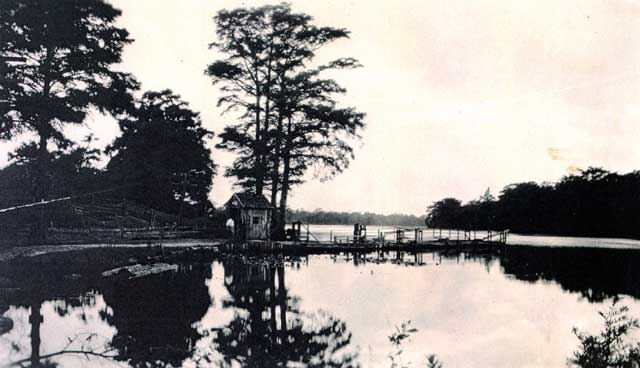Because of the width of the Pasquotank River, ferries became a necessity for transportation in Camden. In 1740, a franchise was granted to Samuel Palmer to operate a ferry from Arenuse Creek to Newbegun Creek on the Pasquotank side, but the distance was too wide and his venture was unsuccessful. Later, John Solley operated a ferry from Chantilly to Relfe's Point (Cobb's Point) about one mile in distance. This proved to be a thriving business until 1777 when the northeast side of the county was formed into Camden County and Enoch Sawyer began to operate a ferry near the courthouse from his house at the Pecan Farm to the mouth of Knobb's Creek. Later, this ferry became known as Lamb's Ferry and remained in operation into the 20th Century. With the building of the "floating road" to Elizabeth City in 1923, Lamb's Ferry was discontinued.
 Lambs Ferry Bridge
Lambs Ferry Bridge
The building of the "Floating Road" was hailed by the Elizabeth City Daily Advance with the statement, "Camden may henceforth retain her own name, but from hence forth and forever in everything except name she is one with Pasquotank." Then in 1941, the Huffman Company began construction on the "Camden Causeway" by pumping 899,000 cubic yards of sand to create a 3 mile causeway to link Camden and Pasquotank counties.
Even though Camden has close ties and shares many services with Pasquotank, Camden is proud to be a small county. Camden County is the first and only consolidated city-county in the State of North Carolina, and it's county seat is the Courthouse Township of Camden. Camden County achieved this status in June of 2006, and became a Unified Government as of July 1, 2006. Camden residents take pride in their rural population, school system, and county government and they look forward to its future in the 21st Century.
Click to Enlarge
